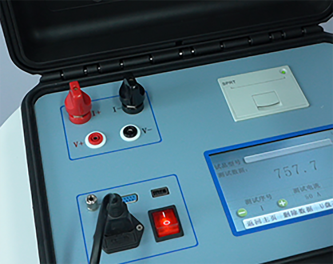 English
English


Understanding Limits on Hipot Test Leakage Current for Electrical Safety Compliance
Understanding Hipot Testing and Leakage Current Limits
In the realm of electrical engineering and safety testing, the term Hipot (High Potential) testing holds significant importance. This procedure is essential for verifying the insulation integrity of electrical devices and components. By applying a voltage higher than the normal operating level between electrically conductive parts and ground, engineers can identify potential breakdowns, ensuring the safety and reliability of electrical systems. However, one critical aspect of Hipot testing that deserves attention is the concept of leakage current limit.
What is Leakage Current?
Leakage current is the undesired current that flows through the insulation of electrical devices. This current can occur for various reasons, including material imperfections, moisture intrusion, or aging of insulation materials. In a safe and functioning device, this leakage current should remain within specific limits to ensure user safety and equipment reliability.
During a Hipot test, the applied voltage can induce a certain level of leakage current, which is monitored closely
. If the leakage current exceeds predetermined limits, it can indicate a potential failure in the insulation system, raising serious safety concerns.Importance of Leakage Current Limits
Setting leakage current limits is vital for protecting users and equipment from electrical hazards. These limits are established based on factors such as device type, application, and environmental conditions. For instance, medical devices generally require stricter leakage current limits due to the direct interaction with patients, while industrial equipment may have more relaxed standards but still must comply with safety regulations.
Inadequate insulation that allows excessive leakage current can lead to electrical shocks, equipment malfunction, or even catastrophic failures. By adhering to established leakage current limits, manufacturers ensure compliance with safety standards and enhance the reliability of their products.
Testing Standards and Regulations
hipot leakage current limit

Various organizations and standards govern leakage current limits in Hipot testing. The International Electrotechnical Commission (IEC), Underwriters Laboratories (UL), and American National Standards Institute (ANSI) have developed guidelines that outline acceptable leakage current thresholds based on application requirements. These standards help ensure consistency and safety across different industries and geographical regions.
For example, the IEC 60601 standard outlines the requirements for medical electrical equipment, specifying leakage current limits that protect patient safety while allowing the equipment to function correctly. Similarly, UL standards provide guidelines for electrical devices, ensuring they meet safety requirements before reaching the market.
Conducting a Hipot Test
When conducting a Hipot test, manufacturers must follow certain steps to ensure accurate and safe results. First, they should select the appropriate Hipot test voltage, which typically ranges from 1.5 to 2 times the device's maximum operating voltage, depending on the standards in play. Next, the test setup should be prepared, ensuring proper safety measures are in place to protect personnel from electrical hazards.
During the test, leakage current is measured and recorded. If the measured current exceeds the established limit, further investigation is necessary. Possible actions include re-evaluating the insulation quality, conducting additional tests, or implementing design changes to enhance insulation integrity.
Conclusion
In conclusion, the importance of leakage current limits during Hipot testing cannot be overstated. As electrical devices become increasingly complex and integral to our daily lives, ensuring their safety and reliability through proper testing becomes paramount. By understanding the implications of leakage current and adhering to established standards, manufacturers can protect users and foster trust in their products.
Ultimately, effective Hipot testing, combined with rigorous adherence to leakage current limits, not only ensures compliance with safety regulations but also contributes to the longevity and performance of electrical devices. As technology continues to evolve, the emphasis on safety in electrical design and testing will remain a fundamental focus for engineers and manufacturers alike.
-
Differences between open cup flash point tester and closed cup flash point testerNewsOct.31,2024
-
The Reliable Load Tap ChangerNewsOct.23,2024
-
The Essential Guide to Hipot TestersNewsOct.23,2024
-
The Digital Insulation TesterNewsOct.23,2024
-
The Best Earth Loop Impedance Tester for SaleNewsOct.23,2024
-
Tan Delta Tester--The Essential Tool for Electrical Insulation TestingNewsOct.23,2024





